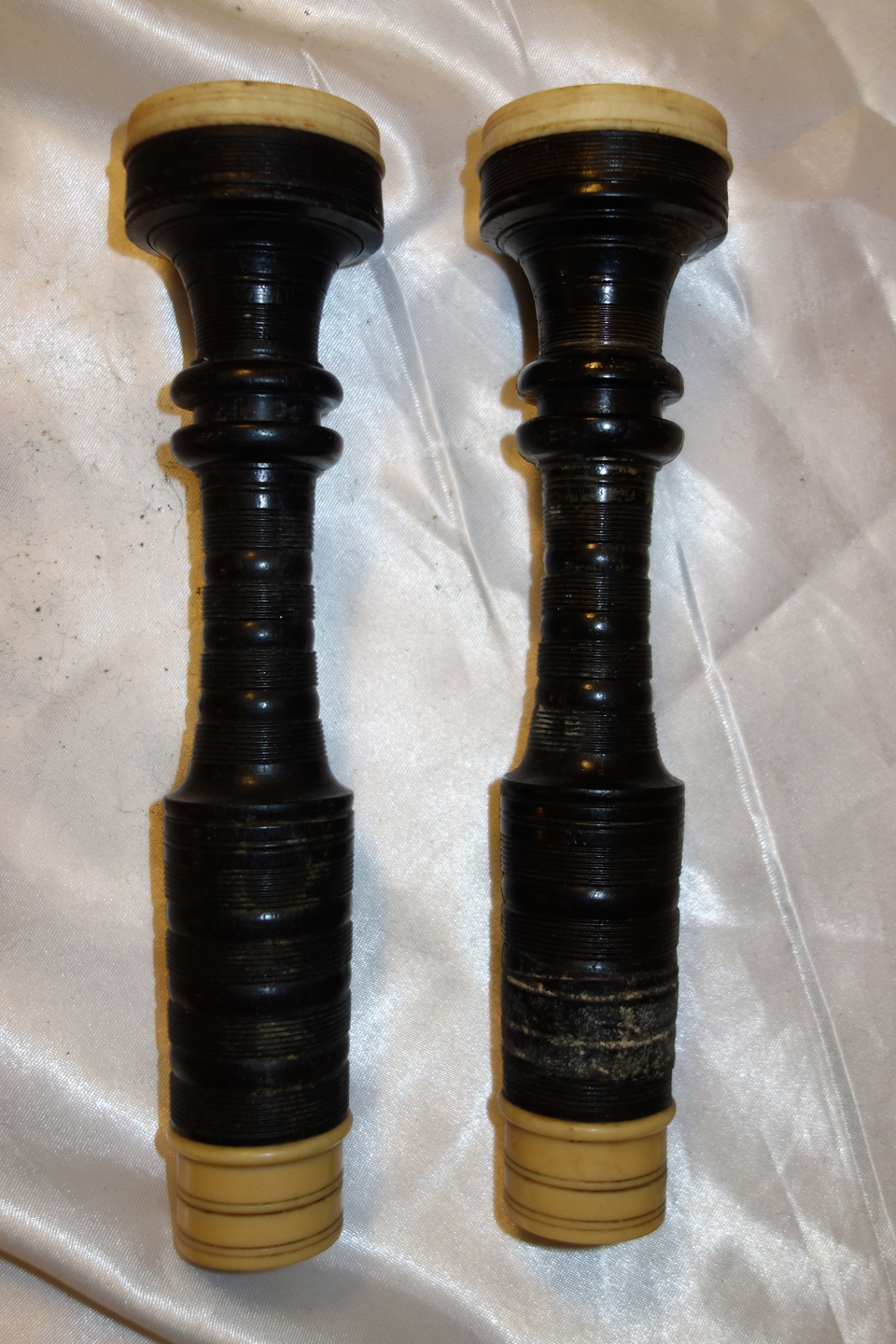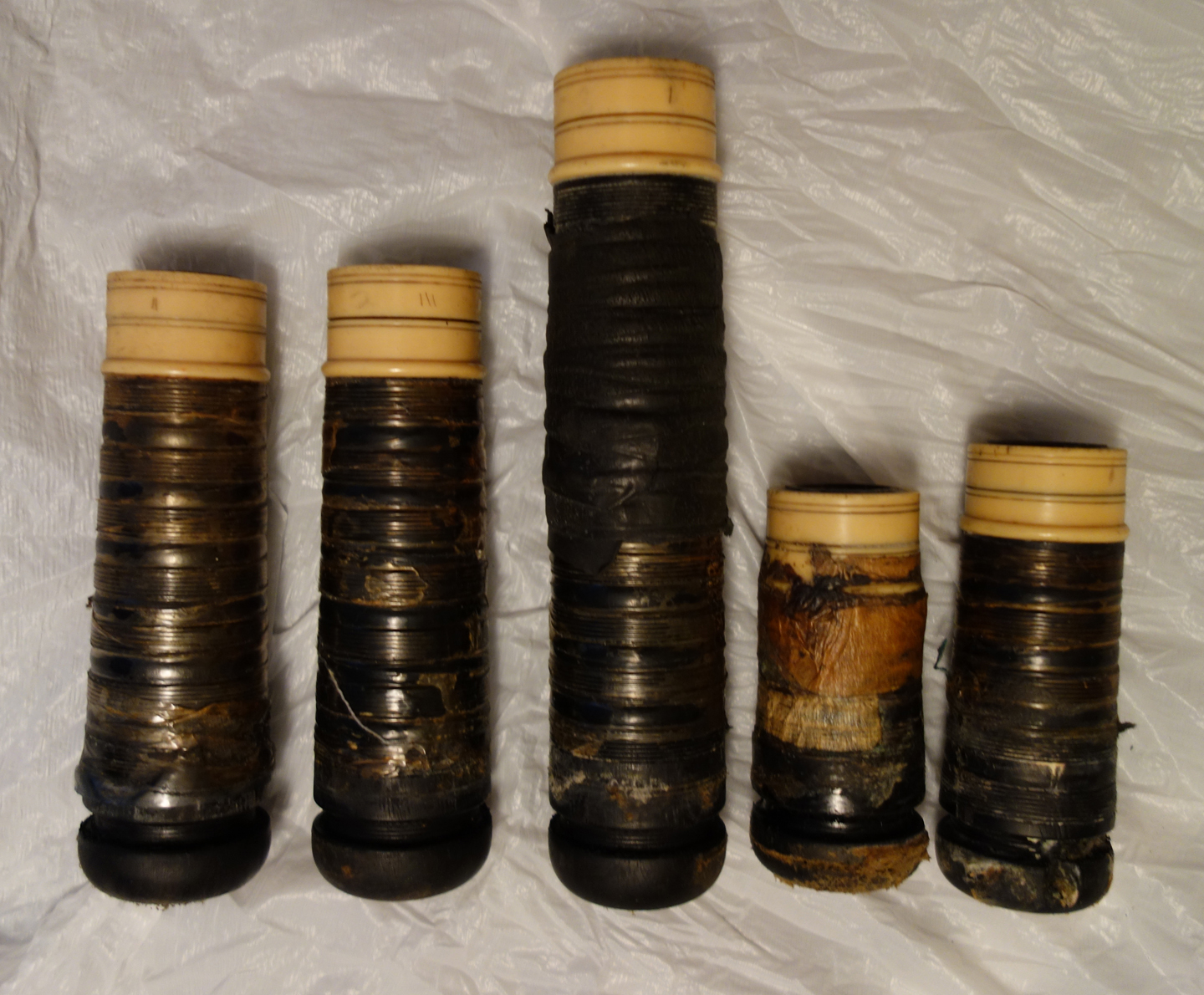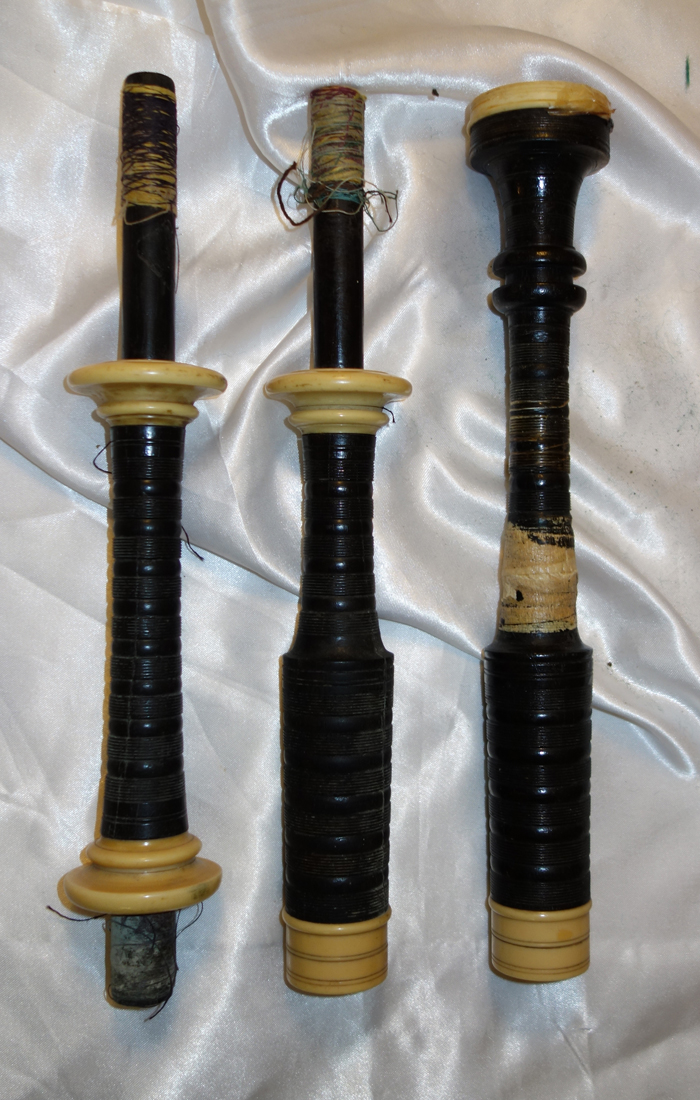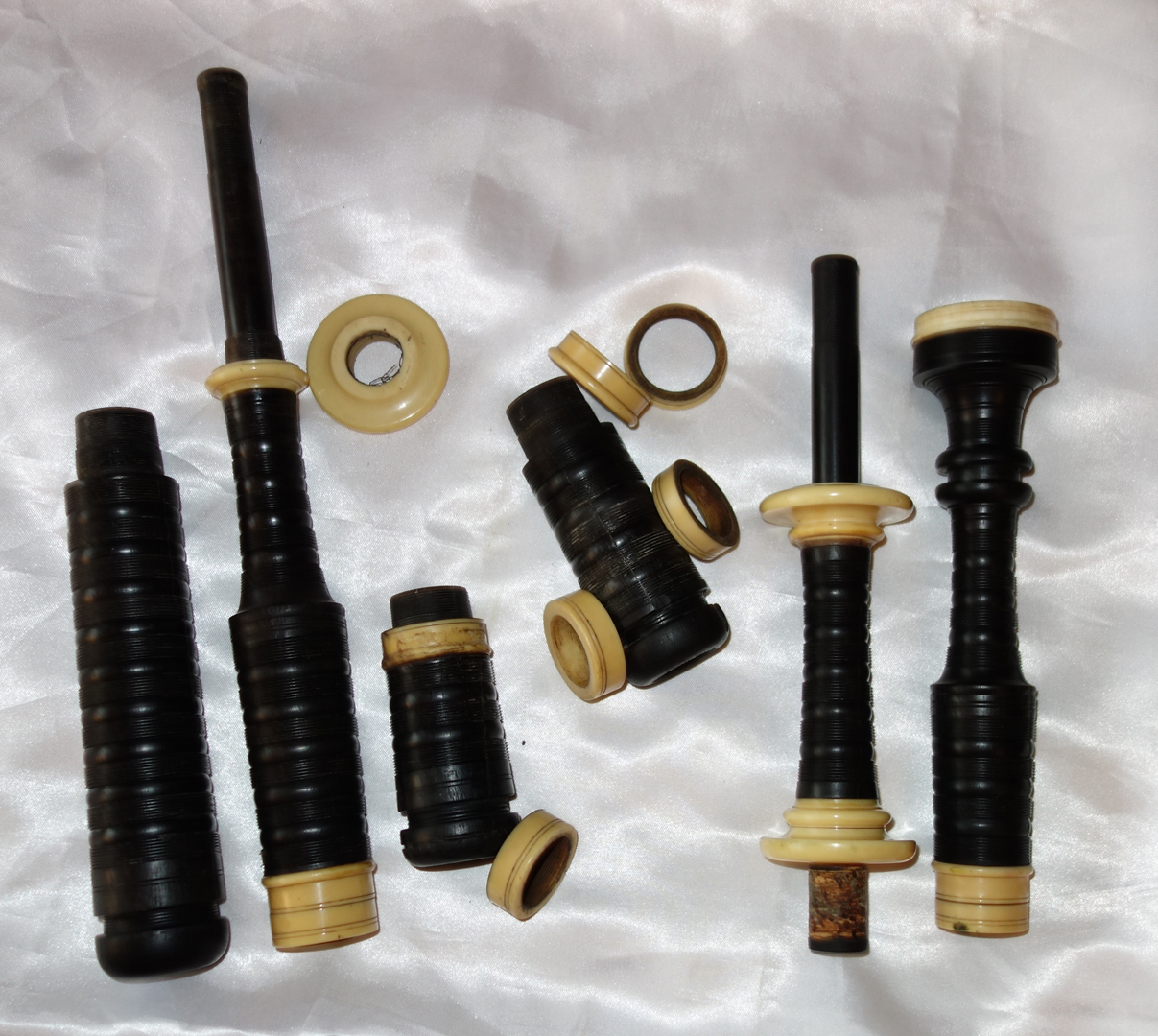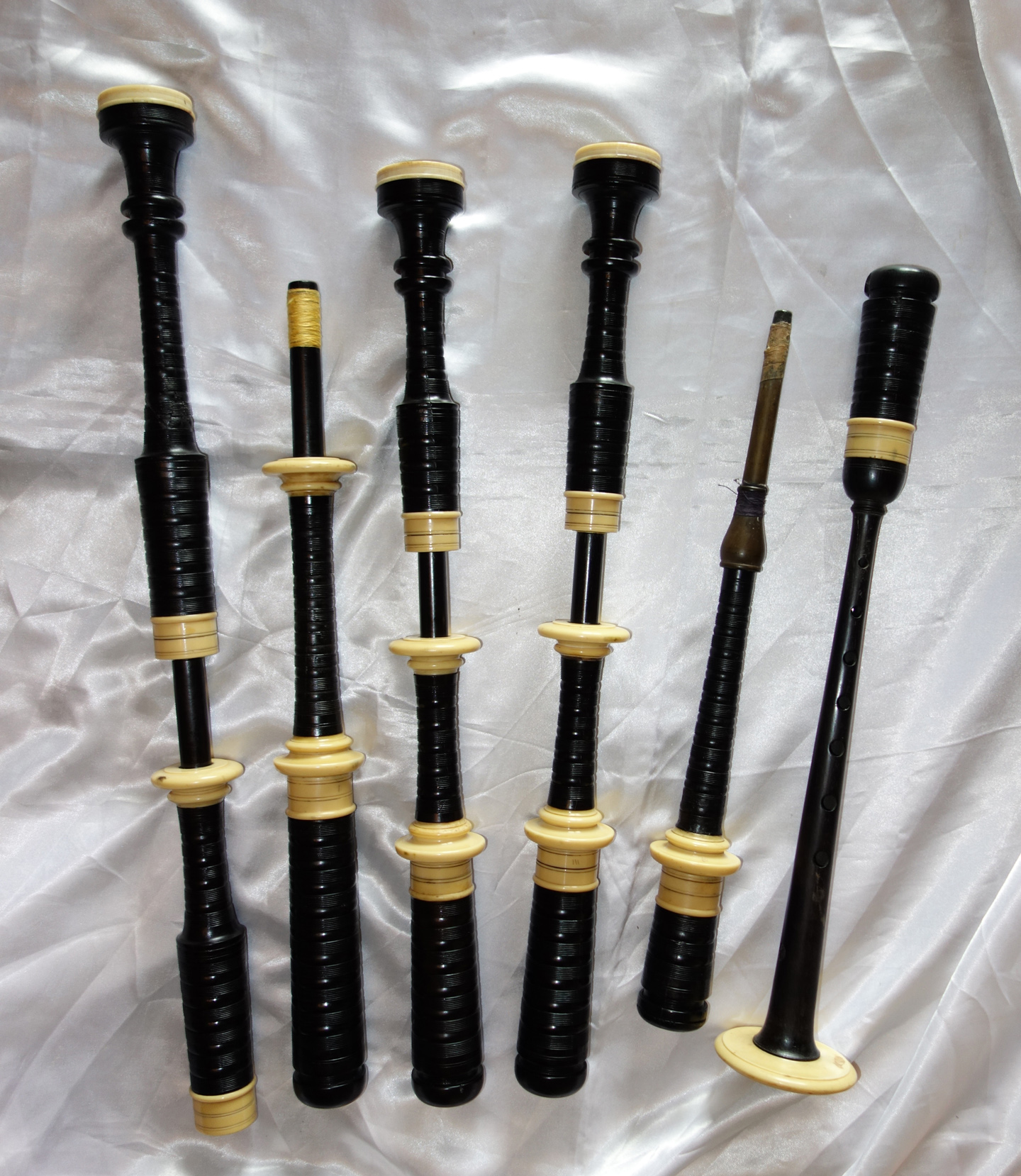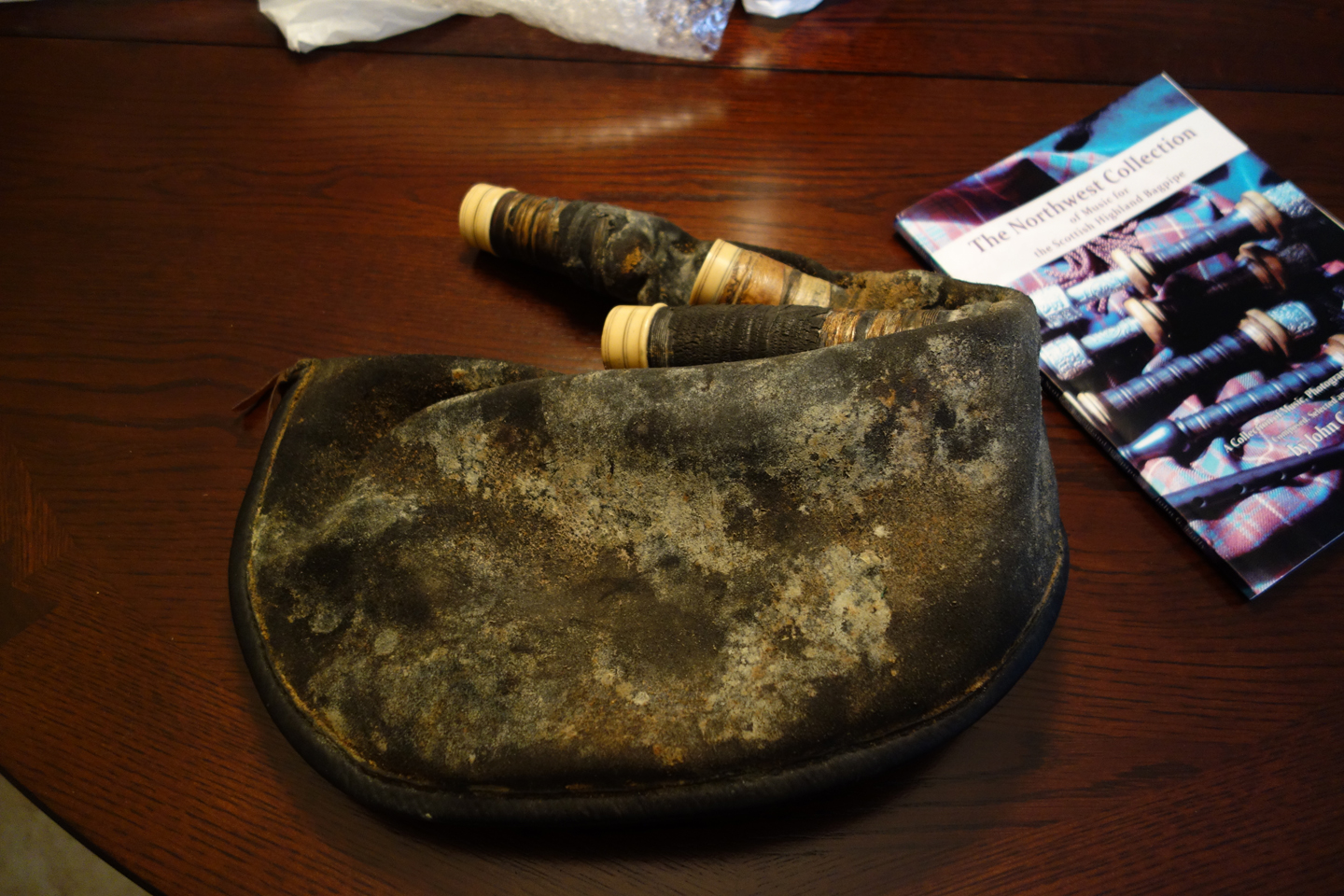This came to me from the descendants of brothers, John William Sutherland and Donald Sutherland. I knew nothing of John William Sutherland and was later to learn that he was a private and quiet man. His brother, Donald, (1888-1963) published a collection of tunes in 1960 with Hugh MacPherson, Edinburgh, the publisher of the Edcath collections.
The bagpipe came to me in difficult condition.
The chanter was marked "Chisholm" which was interesting. I still have not proven or disproven Chisholm ever made bagpipes. We know he was a silversmith and that Robertson made bagpipes for Chisholm at some point in time. Setting any prejudice aside, I dove deeper into the set hoping to uncover its true origin.
The bagpipe came to me in difficult condition.
The chanter was marked "Chisholm" which was interesting. I still have not proven or disproven Chisholm ever made bagpipes. We know he was a silversmith and that Robertson made bagpipes for Chisholm at some point in time. Setting any prejudice aside, I dove deeper into the set hoping to uncover its true origin.
No, I couldn't save the bag. It was in pretty rough shape. The bagpipe was found to have been made of ebony with two-piece celluloid fixtures throughout, except for the rings and bushings which were made of elephant ivory. In consultation with John William's granddaughter, we decided to restore the bagpipe as an artifact rather than as a playable musical instrument.
Where it is not all that unusual to find projecting mounts in two pieces, this is the first time that I've encountered two-piece ferrules which leads to much speculation and no help in determining its origin. According to John Dally's excellent book, The Northwest Collection of Music for the Scottish Highland Bagpipe, Donald Sutherland made at least three bagpipes. He also learned his bagpipe making skills from Tom Mor MacRae, who learned from Donald MacPhee, a maker of great skill and reputation.
Here is a link to a PDF of John Williams writings, entitled The Bagpipe in the Sutherland Family, A Few Early Recollections.
Where it is not all that unusual to find projecting mounts in two pieces, this is the first time that I've encountered two-piece ferrules which leads to much speculation and no help in determining its origin. According to John Dally's excellent book, The Northwest Collection of Music for the Scottish Highland Bagpipe, Donald Sutherland made at least three bagpipes. He also learned his bagpipe making skills from Tom Mor MacRae, who learned from Donald MacPhee, a maker of great skill and reputation.
Here is a link to a PDF of John Williams writings, entitled The Bagpipe in the Sutherland Family, A Few Early Recollections.
Sutherland

